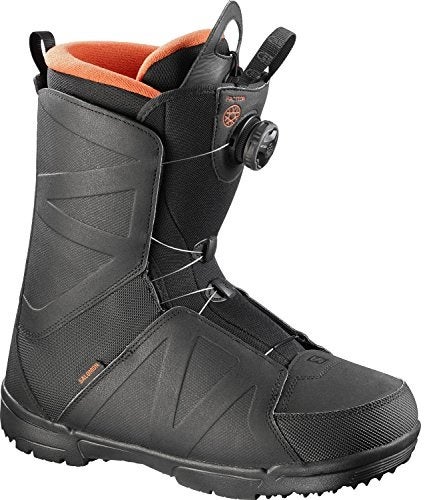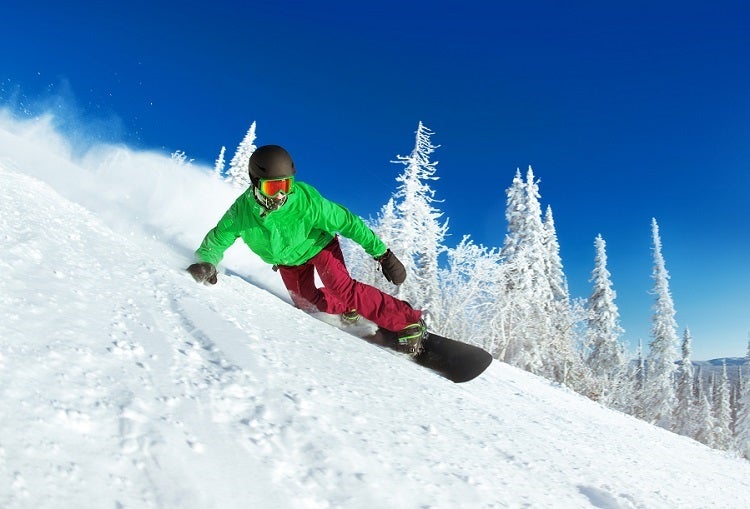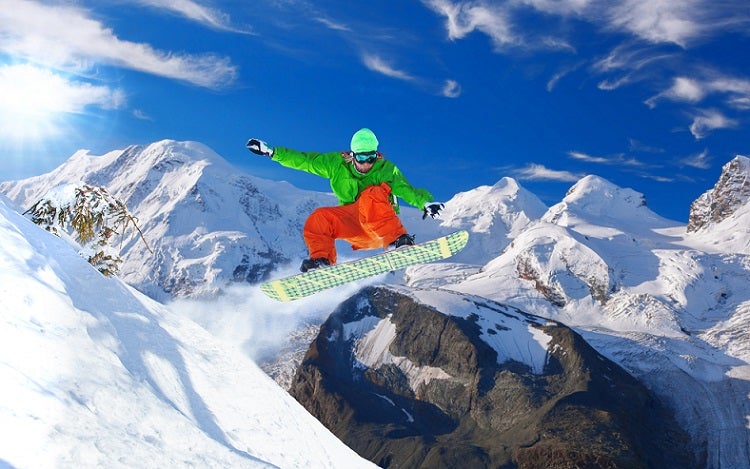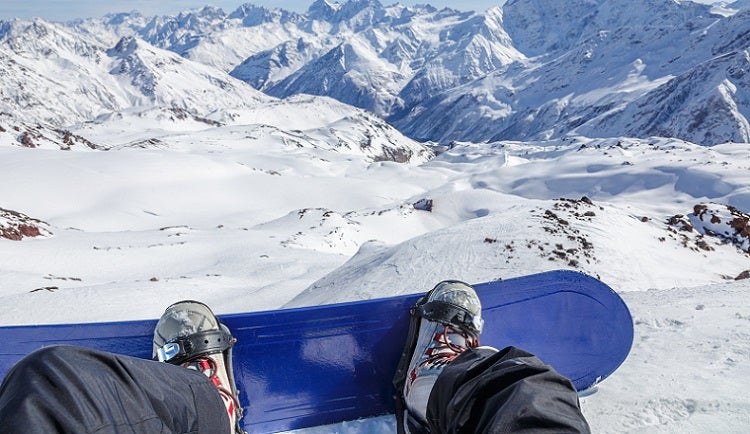
Our Editors independently research, test, and rate what we feel are the best products. We use affiliate links and may receive a small commission on purchases.
Snowboarding can be one of the most exhilarating experiences you’ll ever face. While the wipe outs and diggers are real, snowboarding quickly becomes a lifelong passion for many who try it.
If you’re like me, mountain sports are a huge part of who you are.
That’s why we pay so much attention and money to our gear. Finding the best snowboard boots is never easy, but always worth it.
Today I’m going to help you sort through all the details you really need to know when you buy your first, or next, pair of snowboard boots.
Best Snowboard Boots
For more of my snowboarding gear recommendations, have a look through these popular Outside Pursuits guide links: Snowboard Jackets, Snowboard Pants, Snowboard Gloves
Quick Answer: The 7 Best Rated Snowboarding Boots
- Salomon Titan Snowboard Boots
- DC Phase Snowboard Boots
- Burton Moto Snowboard Boot
- thirtytwo STW BOA W’s
- System APX Men’s Snowboard Boots
- Burton Photon BOA Snowboard Boots
- Head Scout Rodeo Boa Snowboard Boots
We have lined up some of our top snowboarding boots for you to choose from. Our guide and comparison table will help you choose the right boots for you, so lets get to it!
Best Beginner Snowboard Boots
#1 DC Phase Snowboard Boots
- Flex: Medium / 5
- Skill Level: Intermediate
- Lacing: Traditional lacing
- Warranty: 1 Year
DC is a big name in the snowboarding world and they’ve been in the game forever. I love older manufacturers because we can trust them to have it figured out by now.
The Phase boots are made from a combination of leather and nubuck (a type of leather) and come in three colors.
With a flex rating of 5, they’re right in the middle of the range. This might be a good choice for an intermediate boarder.
The removable inner liner and basic insole aren’t going to win any awards, but at least you can pull them out over night to dry by the heat register.

I personally like the traditional lacing for its overall control in the fitment process. Even though it takes a bit longer than those new fancy lacing systems, it’s tried and true.
If it ain’t broke, don’t fix it – as they say. In my opinion the DC Phase’s are the best beginner snowboard boots.
Best For: A mid-level boot at a budget price with no flair.
Women’s Snowboard Boot: DC Women Snow Boots Karma Lace up Snowboard
Best All Mountain Snowboard Boots
#2 Burton Moto Snowboarding Boots
- Flex: Medium-Soft / 3-4
- Skill Level: Beginner / Intermediate
- Lacing: BOA lacing
- Warranty: 3 Years
Everyone knows the name Burton in the snowboarding world, they are the “Kleenex” of snowboard equipment.
This full featured snowboarding boot comes in four colors with the BOA lacing system so we know they will fit great and are easy to get on on and off.
Burton uses what they call “DynoLITE Outsole” but the result is a very comfortable pair of boots that are 20% lighter than most typical boots.
Taking a page from Columbia and their “Omni-Heat” they use a similar technology that reflects heat back to your feet keeping them warm on those freezing Jan-Feb days.
The Highline’s are a well designed boot and it will serve most snowboarders quite well and among the best all mountain snowboard boots your going to find, that won’t break the bank!

With a medium flex rating these are meant for beginner to intermediate riders that have that “broken in” feel right out of the box.
They come with a one-year warranty and feature a very simple removable liner and Molded EVA Footbed.
Best For: Beginner to intermediate snowboarders looking for a good freestyle boot.
Women’s Snowboard Boot: Burton Limelight Boa Snowboarding Boot
Best Mens Snowboard Boots
#3 Salomon Titan Snowboard Boots
- Flex: Medium-Soft / 3-4
- Skill Level: Beginner / Intermediate
- Lacing: Quicklock lacing
- Warranty: 2 Years
I ski on Salomon boots because they fit my foot shape like a glove! Even in their budget model boots, Salomon is known for bringing their A-game.
Salomon is a relative newcomer to the snowboard boots game and they bring their knowledge of ski boots to their snowboarding boots.
These BOA lacing boots use the single dial coil system. While it’s not as custom fit as the double or triple systems, it’s affordable and effective.
Unlike many boots, Salomon opted for some advanced features in this intermediate boot. They’re packing in the D-light Outsole and Ortholite C1 Footbed.
Don’t make a mistake here and think this is totally custom fitment – it’s not. It’s just a more advanced form of most stock footbeds.
While it may not be as good as full custom, it’s much better than most. Overall, they may be the most comfortable snowboard boots you can buy.
Salomon pegs these boots at a medium-soft flex which would be a 3-4 flex for those of you hip on the lingo. At that range, it would probably be a good boot for beginner to intermediate boarders who prefer a soft boot.
While there are a lot of good snowboard boots out there, the Salomon Faction’s might be the best snowboard boots!
Best Women’s Snowboard Boots: Salomon Pearl BOA Snowboard Boot Women’s
Best BOA Snowboard Boots
#4 thirtytwo STW BOA Snowboarding Boots
- Flex: Medium / 5
- Skill Level: Intermediate / Advanced
- Lacing: BOA lacing
- Warranty: 1 Year
Thirtytwo brings us a solid boot with a few advanced features. If there’s one thing I love to see in a boot, it’s high level features at a moderate price.
We don’t all need to be professionals, and most of us are on a budget.
These boots are made to have a flexible articulated cuff so that the ankle can flex without bindings. A molded tongue and half-size lasting makes the boot a solid pick for those looking to really dial in the fitment.
I would consider this one of the most precise boots on our list for someone who wants professional level fitment.
While I would have loved to see dual or triple zone BOA lacing, those additional would also jack up the price.

As it is the single BOA lace with the removable liner and solid construction features price this boot at the mid to high end of our range.
Remember… you get what you pay for!
Best For: Advanced level rider with a larger budget.
Women’s Snowboard Boot: thirtytwo STW BOA Snowboarding Boot Women’s
Best Budget Snowboard Boots
#5 System APX Men’s Snowboard Boots
- Flex: Medium / 5-6
- Skill Level: Beginner / Intermediate
- Lacing: Traditional lacing
- Warranty: 3 Year
Now let’s take a look at a true value snowboard boot: the System APX.
With a flex of about 5, they’re in the middle of the range which makes them a good choice for beginner/intermediate boarders or casual days on the hill for an advanced snowboarder.
They’re rocking a Thermofit Heat Moldable liner in this boot which is an EVA memory foam liner that will mold to all the curves or your feet for a comfortable day on the slopes.
While it’s not a custom moldable liner, you could always get an aftermarket liner if you really wanted to dial in the fit.
While they don’t have the latest Boa lacing system, you have the ability to get a great fit with traditional laces.
Best For: Beginner to intermediate snowboarders looking for an budget boot system.
Best Burton Snowboard Boots
#6 Burton Photon BOA Snowboard Boots
- Flex: Medium-Stiff / 7-8
- Skill Level: Intermediate / Advanced
- Lacing: BOA lacing
- Warranty: 1 Year
We had to include Burton a second time with the Photon boots. These are not meant for beginners and for more intermediate/expert boarders.
They are on the stiffer side with a 7/10 rating and the Boa speed lacing system allowing you quick adjustments and easy to get on and off.
If your feet get cold you will appreciate the heat reflective interior of these boots. Certainly not as good as having a pair of heated socks but a close second!
The boots feature a molded backstay which provides support behind the ankles for backside moves. Available in plenty of sizes so you shouldn’t have any problems finding one that fits perfect.
I think Burton has it nailed with these boots! Put on a pair and get ready to shred.
Best Freestyle Snowboard Boots
#7 Head Rodeo Trace Snowboarding Boots
- Flex: Medium / 5
- Skill Level: Beginner / Intermediate
- Lacing: BOA lacing
- Warranty: 1 Year
HEAD is known for pushing the limits of snow sports technology. I ski HEAD skis because they push the mountain as hard and fast as I do. Their snowboard boots are no different.
While these snowboard boots from HEAD are more in the beginner to intermediate range, everyone can find a model that works for them.
With a set forward lean of 7 degrees and a traditional lace, they’re not going to be super customizable. However, most intermediate boarders don’t need that much customization anyways.
At the price, you can’t argue with the features. There’s a removable comfort liner with a fleece / foam combination which is a pretty standard but effective setup. The Head Scout’s are probably the best snowboard boots for the money.
Best For: Beginner or intermediate boarders looking for quality at a serious bargain!
Women’s Snowboard Boot: HEAD Galore Pro BOA Boot – Womens
Snowboard Boots Comparison Table
| Snowboard Boot | Flex | Lacing | Ability Level | Rating | |
|---|---|---|---|---|---|
| DC Phase | Medium / 5 | Traditional lacing | Intermediate | 4.1 / 5.0 | |
| Burton Moto | Medium-Soft / 3-4 | BOA lacing | Beginner / Intermediate | 4.5 / 5.0 | |
| Salomon Faction | Medium-Soft / 3-4 | Quicklock lacing | Beginner / Intermediate | 4.0 / 5.0 | |
| thirtytwo STW | Medium / 5 | BOA lacing | Intermediate / Advanced | 4.3 / 5.0 | |
| System APX Boots | Medium / 5 | Traditional lacing | Beginner / Intermediate | 4.1 / 5.0 | |
| Burton Photon BOA | Medium-Stiff/ 7-8 | BOA lacing | Intermediate / Advanced | 4.7 / 5.0 | |
| Head Rodeo Trace Boots | Medium / 5 | BOA lacing | Beginner / Intermediate | 5.0 / 5.0 |
Author’s Expertise / Why You Should Trust Our Reviews
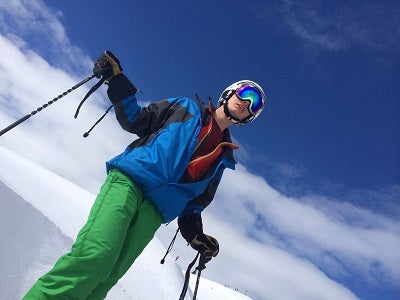
I started writing online for my own outdoor sports blog in 2010. Right out of the gate I landed opportunities to test gear for Road ID, Hydrapak, Wolverine, Helle Knives, Pearl Izumi, and GU Energy. Those were the days when growing a no-name blog was easy. Today niche blogging is a different story.
In 2012 I left Central Wyoming College with a degree in Outdoor Education and Leadership. Soon after, I was on a month-long expedition with the National Outdoor Leadership School’s Outdoor Educator Course which helps would-be outdoor guides ascend from “aspiring” to “inspiring”.
Between here and there I’ve participated in and spoken at length about outdoor pro-deal programs for companies like Patagonia, Smith Optics, Giro, Therm-a-Rest, Platypus, MSR, Columbia, and many more. I still work closely with tons of outdoor gear companies to review and analyze products. If you have a product opportunity you’d like to discuss, please review my guidelines and contact me here.
After several seasons of guiding backpacking trips and working as a certified Alpine Ski Instructor at Deer Valley Resort in Park City, UT for several seasons, I had to move on. As any educator will tell you – teaching doesn’t pay the bills very well.
In 2016 I began building my freelance writing career as readers and other bloggers reached out to me for help with technical outdoor sports content strategy for online businesses. Within weeks I was overloaded with requests for freelance writing and my new career blossomed.
2018 saw the launch of Hike With Less, my ultralight backpacking partnership program with Dustin Walker.
How to Choose the Best Snowboard Boots – Buyers Guide
- Fitment
- Flex and Stiffness
- Lacing
- Boot Liners
- Boot Footbeds
- Binding Footbeds
- Men’s vs Women’s Snowboard Boots
- Snowboard Boots FAQs
- Best Snowboard Boot Brands
- Final Thoughts
Since each snowboarder is different you’ll need to first answer a few questions:
What kind of snowboarding do I want to do? How often will I be snowboarding? How much budget can I allow for buying my snowboard boots? Which is more important; quality, or aesthetics?
These are critical questions that you must answer before you just head out and gear up. Expensive is not necessarily always better, and the best-looking snowboard boots might not be right for your needs. Let’s take a look at some critical decision points.
Boot Fitment
Snowboard boots, like ski boots, must fit snugly so you don’t get heel lift. However, it’s important that they not bind or pinch. Any pinching or binding when you try on a snowboard boot will result in pain, hot spots, and blisters after a few days of riding.
Now, it’s important to remember that boots will conform to your foot after a few days of wearing and riding. However, some problems don’t get better with wearing.
If they’re just a bit too snug, that will probably fix itself as the boot forms around your foot. If they pinch your toe or ankles, that’s probably just going to keep getting worse.
An oversized boot feels sloppy and allows your foot to “slosh” around freely in the boot. This can cause toe or shin bang, blisters, and lack of control on the board. None of these things are desirable.
Snowboard boots unlike hiking boots will expand somewhat and what felt perfect when you put them on for the first time will after a few hard days on the slopes are now feeling sloppy and too big.
Never go too big on a boot!
Video: How to size snowboard boots.
Snowboard Boot Flex
Flex, in the world of snow sports, refers to how rigid your boots are. While ski boots are rated with numbers generally from 70-130, snowboard boots are a more standard “1-10” system.
A rating of 1 would mean something about as stiff as a worn in leather boot. A rating of 10 would be the equivalent of a concrete shoe.
Generally soft flex boots is a good place to start if you’re lighter weight, or a beginner snowboarder. The heavier you are and the more advanced you become in skill, the stiffer of a boot you’ll want.
There are exceptions to this though as personal preference plays a big role in determining the optimal flex for you.
Guide to Snowboard Boot Flex:
| Riding Style | Recommended Flex | Recommended Flex – Numeric |
| Freestyle | Soft | 1-4 |
| All Mountain | Medium | 5-7 |
| Backcountry / Freeride | Medium to Stiff | 6-10 |
| Race/Freecarve | Stiff | 7-10 |
Snowboard Boot Lacing Systems
This might boggle your mind, but the world of lacing just isn’t that complicated. What it boils down to is three systems – traditional, BOA and speed lacing.
Traditional laces
As you might have guessed, are the kind you’d find on most tennis shoes. Those good old soft fabric laces we all grew up with. Unless you were a Velcro kid…
There’s totally nothing wrong with these and, in fact, many boarders prefer these laces because of the greater heel hold and tightness they can achieve. They just take a couple more seconds to tie.
Speed Laces, or Quick Pull
These laces use a ratchet style system with some fancy lacing to make things easier. Ultimately, however, it seems to just complicate the process.
If these laces break they’re harder and more expensive to replace. Plus, it’s often hard or impossible to get just the right fit with these systems.
BOA Lacing
One lacing system that is a newer arrival on the scene is the BOA lacing system. These systems come in various levels of control with one, two, or three dial boots with dual boa being the most common.
Each dial is attached to a thin cable that runs through the boot and acts as lacing. By turning the dial, you can fine tune fitment in each area of the boot. This might be the next evolution of quick lacing!
Boot Liners
Boot liners are just like glove liners – they’re an interior padding and warmth system. In some boots, these liners are a critical part of the fitment and performance factor.
For recreational snowboarders on a budget, sticking with a standard liner will be the cheapest. However, having spent over 100 days a season in ski boots, I can tell you that a custom fit liner is a dream come true.
Putting the extra cash down to get a pair of snowboard boots with a custom fit liner will be one of the best purchases you ever make. It improves your experience on the hill, the warmth of your feet, and the control over your board.
Go for heat moldable liners if you can. These must be fitted and adjusted by a professional shop. Don’t try to bake them in your oven and do them yourself because you’ll ruin a very expensive pair of boots.
The pros know how to heat and adjust these boots and exactly how to fit them to your foot. Make the investment and love it!
One other consideration is your choice of socks. Choosing a good pair will make your boots that much more comfortable. Here are some of my favorite pairs of socks.
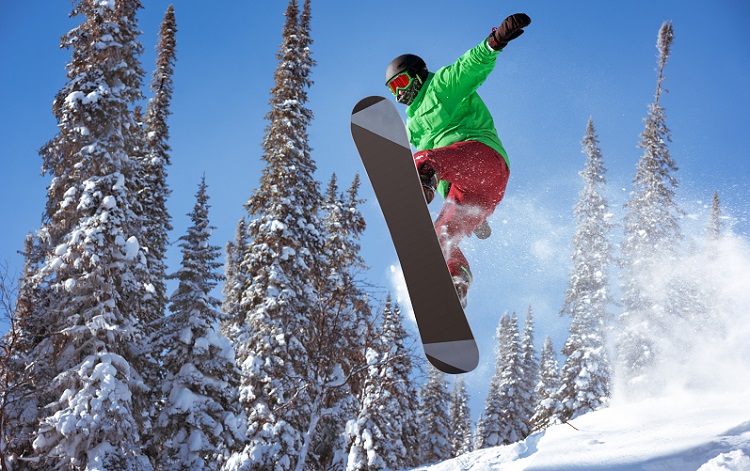
The Three Types of Snowboard Boot Liners:
| Stock Liners | Provide basic-level boot padding and stability and should over time will mold to the shape of your foot. |
| Moldable Liners | This is a step up from a stock liner in price and materials. They are made to mold to your foot shape using your body heat. |
| Moldable Liners | This is the gold standard the boot world that provides a true custom fit for your foot. The heat molding process is best perfomed by trained professionals. |
Boot Footbeds
This is another secret of the world of professional snowboarders and skiers. We all use custom liners and aftermarket footbeds. Walk into any pro shop and ask them to show you the difference between a stock footbed and a custom made footbed. You’ll be blown away!
Custom footbeds are usually made from a cork or polymer base which is carefully trimmed and sanded by a boot technician to match the exact contours of your foot.
Not only does this increase comfort, when paired with a set of custom boots, it will even out any misalignments in your natural body.
In most people, our legs and feet aren’t exactly the same. Sometimes we have one leg slightly longer than the other. Some of us are naturally Pidgeon toed.
There are tons of discrepancies that a custom foot bed and custom boots can help correct. You’ll be amazed at the difference!
Binding Footbeds
Your boots have footbeds or insoles that can be custom fit, changed, adjusted, and removed to dry out. Similarly, the binding on your board also has a footbed that can be slightly modified. Together these create the interface between you and your snowboard.
So, why pay attention to the footbed on your bindings when thinking about boots?
Binding footbeds can be swapped out to improve your ride. Most often the upgrade people opt for is some type of damping (not dampening – that means to make wet) system. This is usually in the form of a rubber or foam footbed.
Footbeds that act as dampers help to reduce the amount of energy and impact that comes up through the board and into your feet. This is ideal for landing tricks as well as simple riding where snow, ice, and crud can rattle your teeth.
Additionally, footbeds on bindings are often adjusted for cant. Canting means to tilt something. So, for those of us who stand just a little to much on the pinky toe side, the footbed can be adjusted to account for that. Same goes for those who stand just a little too much on the big-toe side.
Together with the footbeds in your boots, these two components dictate how well your boots will match to your board.
Men’s vs Women’s Snowboard Boots
Men’s and Women’s boots are not just different because boots for women come in more pretty colors, there are real differences. Women’s have some real atatonmical differences in the shape of their feet and the snowboard boot needs to accommodate this.
Women tend to have a heel that is narrower in proportion as compared to men and if the boot does not reflect this, women wearing a mans bootwill up up swimming in a mens boot. As noted above, snowboard boots will usually stretch some so going down a half size is a good move. If they are too tight right off the bat, exchange them for a half size larger.
FAQs About Snowboard Boots
Q: How tight should I make my snowboard boots?
A: Here’s the deal, you need to fit your boots like you ride your boots.
Stand in a riding position with your knees slightly bent. With your boots laced up, tap the heel of the boot on the ground to make sure your heel is in the pocket.
Now roll on to the toe of your boots (weight forward). Your heels should not lift up in the back of the boot.
Roll on to the hell of your boots. There should be no pinching but your toes shouldn’t slop around in the toe pocket.
Roll inside and outside on the boots a little bit. Your feet shouldn’t be torquing around in the boots.
Ideally you want to feel a snug fit without any pinching or rubbing.
Q: My snowboard boots hang over the board a little, is that okay?
A: No! This is not okay at all.
When you crank that board up on the heel or the toe side you can’t be dragging your boots. Dragging boots can cause loss of grip on the board edge which could result in a very dangerous digger on the mountain. Don’t do that!
If your boots are too big for the board (assuming they’re properly fitted) that means your board is too small.
Q: Are speed laces as good as traditional laces?
A: These days they might as well be!
There was a time when zip laces and speed laces on board boots really just kinda sucked. That’s all I can say about it.
Today’s ratcheting speed laces are good enough to really tighten down and hold on. But are they as good as the old school regular cloth laces?
I think so. Traditional laces might allow a little more custom fitting but by the end of the riding day your laces are probably evenly snug even if you originally had them snug in some areas and loose in others.
That said, I’d say the convenience of being able to quickly loosen your boots when you’re in for a quick beer is more than worth spending the extra cash on some speed laces.
Q: How can I make my snowboard boots more comfortable?
A: Probably the biggest tip I can give you is to keep your boots unlaced until you get on the board. Most snowboard boots are soft enough that they’re reasonably comfortable even when laced up, but stiffer boots can get to you after a few hours.
The other thing you can do is to keep your toe pocket just a little bit bigger. Be careful about going sloppy large as that can make your boots perform poorly. However, tight toe pockets will cause cold toes so if that sounds like you try leaving the front laces looser or finding a boot with bigger toe pockets.
Q: Are snowboard boots heaters worth the money?
A: Oh yeah, they are!
Personally I run warm and rarely have problems with cold toes on the mountain. That’s why I’ve never sprung for warmers, but they’re definitely an ass saver at times. I would have paid tons of cash to have them on a couple of -20 windy days.
The most reputable warmers are the Hotronic warmers. I would personally pay a little extra and have them professionally fitted and installed by a tech shop but you can do it yourself by ordering in the parts.
If you never get cold toes or you prefer to just head in to the lodge when those cold days set in, then they may not be worth your money
Best Snowboard Boot Brands

As always choosing the “best” snowboard boot brands is very subjective. Ask 10 snowboarders and you will get 6-7 different answers. However certain brands always come to the top like Burton. The originator of snowboards and making some of the best boots available at any price.
DC Phase, known for making quality boots at very reasonable prices. Newcomer to snowboard boots, Salomon being best known for their ski boots and now make some quality boots at reasonable prices. thirtytwo, a leader in snowboarding is certainly a standout in the intermediate category.
- Burton
- Salomon
- DC Phase
- Head
- thirtytwo
Outside Pursuits Overview
There are dozens of snowboard brands, each with a handful of snowboard boots to choose from. The options are practically limitless.
Hopefully you’ve found a set of boots here that match your needs. If not, there are plenty of brands to start looking at. Head, DC, and Salomon are all reputable brands that make a great starting point.
Remember, go back to the “how to choose” section to help you in making your final decision. There are boots out there for everyone.
Beginner snowboarders should choose a boot that’s within a reasonable price range with a few advanced features. As you become more experienced you’ll learn exactly what to look for in a boot and which features you can’t live without!
How We Researched
To come up with the top snowboarding boots we researched a variety of sources for reviews such as REI, Backcountry, Moosejaw, EVO along with our own personal experience.
We also consulted online magazines for product research and reviews to get as much unbiased information as we could. To help weed out fake reviews we used Fakespot.com to make sure we only looked at genuine reviews.
With so much quality gear available, we had to narrow it down based on what we felt were the best options were for the price. The author, Casey Fiedler was a full time ski instructor for Park City and The Canyons in Utah.
To help narrow down the selection he used his personal experience along with recommendations from fellow instructors.
After extensive research, we came up with our list to help you choose the right pair for you.
Sources
I hope this guide was helpful for finding the best snowboard boots to fit your needs. If you want to comment or recommend a pair of boots I didn’t include, please use my contact form to get in touch.
New to snowboarding? See my beginners guide to snowboarding for tips and advice.
Have fun and be safe out there!

